The inventive restaurateur, business partner and wife of Massimo Bottura reflects on the future of food, and what it means for her to be honoured at The World’s 50 Best Restaurants 2025.
Lara Gilmore is the genial mastermind behind the Massimo Bottura brand. Considered and reflective, where Bottura is passionate and instinctive, the pair – arguably the culinary world’s most famous couple – balance each other out.
Their flagship restaurant, Osteria Francescana, won the Highest New Entry Award in 2009 at The World’s 50 Best Restaurants, and ascended to the No.1 spot in 2016, making it part of the Best of the Best group. At The World’s 50 Best Restaurants 2025, held in Italy for the first time, Gilmore and Bottura were crowned winners of the Woodford Reserve Icon Award.
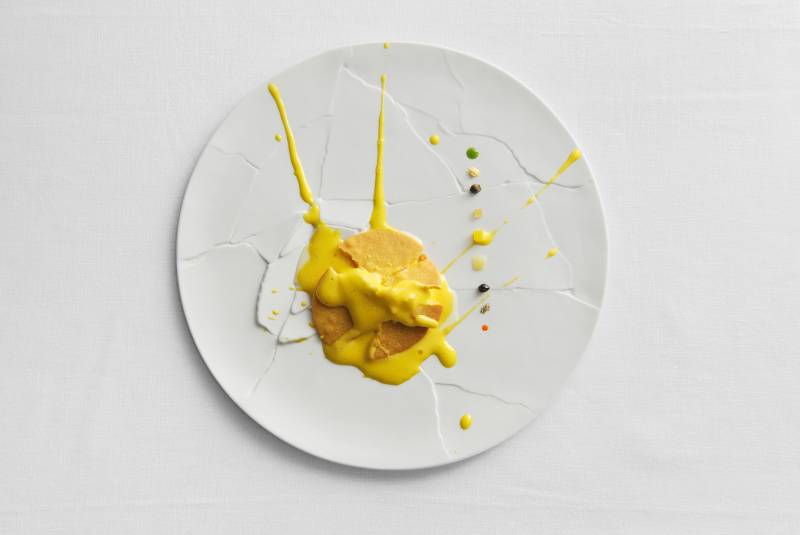
Osteria Francescana gained international acclaim for its irreverent approach to Italian cuisine
Gilmore – born and raised in the US but a long-time resident in Italy – joins 50 Best to discuss the future of food, the role of storytelling across the Osteria Francescana and Al Gatto Verde restaurants and Casa Maria Luigia hotel, and the importance of failure.
How do you and Massimo influence each other’s creative processes? Would you say your visions always align?
“There’s a duality going on that is often two sides of the same coin. It’s a yin and yang situation with differing points of view that lead to our decision-making process.
“Massimo is very gut instinct and immediately has a reaction to something. And then he gets really excited. I’m a little bit more pensive and ruminate over things. Then I consider the different points of view and express my opinion. We usually have a conversation that leads to the third option.
“Over the years, the margins are blurred between who chose what and who took which direction. I think that’s kind of magical because it’s not just him or just me. It’s a sense of working together and the power of two.”
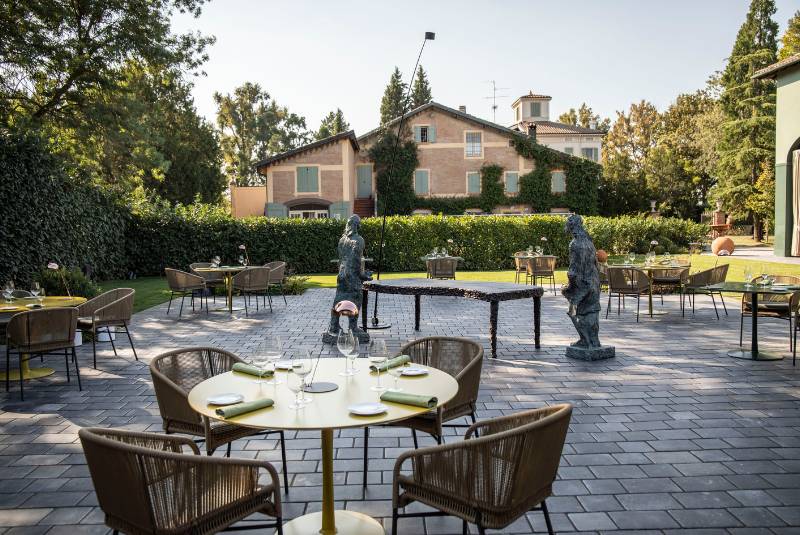
Al Gatto Verde, the duo’s latest venture, is No.92 on The World’s 50 Best Restaurants 2025 extended list
What role does storytelling play in the experience you curate across the Francescana portfolio?
“I learned a lot about storytelling growing up from my dad, who was the editor-in-chief at Reader’s Digest. I was in a family where we were always reading and evaluating stories and how they could be made better. Massimo is a natural storyteller because his dishes are not only flavour-based, but also based on history and culture and his imagination and memories. A dish will often come together as a story in his mind before it is a flavour or before it is plated.
“He would come home and tell the story about what happened in the kitchen. I started writing it down and translating all these back stories of each dish. So when it was time to describe it to the guests or to a journalist, the story was already there. They’ve become a really distinguishing part of the way we work and share what we do.
“But the stories also make you feel part of something. We have lots of tools to play with – artwork, colours, furniture, music, Massimo’s playfulness – to tell our stories. It’s a way of democratising food too. Someone doesn’t have to be a well-experienced gourmet to jump in, sit at the table and have a story that they can relate to. We want our guests to leave with something they didn’t know before: a point of view, a recipe, a new perspective on art or the Italian landscape or history…
“I want the unique experiences to be happening to the people who are working with us as well. It’s really amazing when you work with people you like – it’s contagious. Everything tastes better, the landscape and the gardens look better, the rooms are more beautiful. There’s some magic there.”
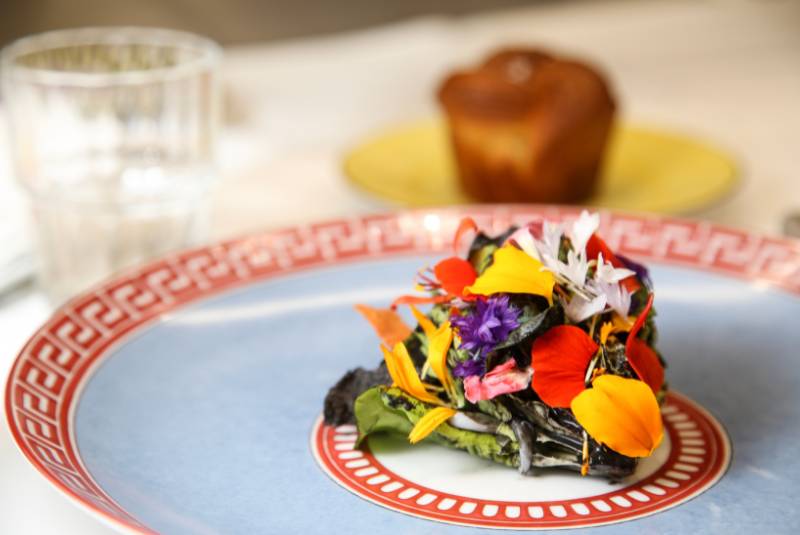
Bottura’s dishes are expressive and playful
Guests are invited to wander freely around Casa Maria Luigia – what does it mean to you that strangers feel like invited friends in your space?
“I never really worked inside Osteria Francescana, I was always behind the scenes and never really interacted with guests. When we opened Casa Maria Luigia, I found a space where I could insert myself in a very natural way and be myself.
“When Massimo and I saw this house and it was up for auction, it still had some furniture in it, but it was abandoned and it seemed so lonely. We were actually looking for a little weekend house for ourselves and our dog and our kids and obviously this place was way too big for that. But the feeling I had was this property needs people, otherwise it’s not going to be beautiful. It’s not going to be fun.
“Seeing people walk around, enjoy your art, take off their shoes, put their feet up on the sofa, read the books you have around, be curious, ask questions… It’s so interesting; it’s kind of performance art in a way.”
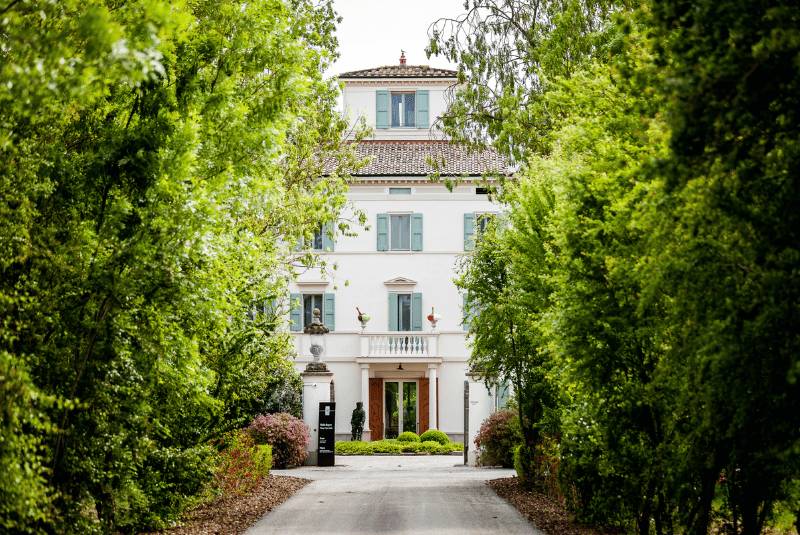
Casa Maria Luigia offers Gilmore and Bottura a chance to engage further with their guests
Food For Soul has been an impactful initiative. What has surprised you the most about trying to create social change through food?
“Food for Soul began after challenges posed during Expo 2015 in Milan. The question was around feeding the planet. Massimo, as a chef, had a very immediate reaction. We never would have imagined it could have turned into such a big project with 13 Refettorios [food kitchens for the needy] around the world and more coming. We created a model but made it flexible enough so that each organisation can do it their own way.
“Every time I go to a Refettorio, I’m amazed at the work people are doing and their passion. We’re working to see whether we can open a Refettorio in Africa, maybe open some others in South America. But it’s also really important to stimulate young restaurateurs and chefs to think beyond their businesses. Cooking can be so much more. It can be a political act. It can be social justice. It can be food equity. It can be about community.
“Sometimes we limit ourselves to think that working in food is only about working in restaurants. That’s a concept that we’d like to redefine: working with food is actually about working to change people’s lives, perspectives and futures.”
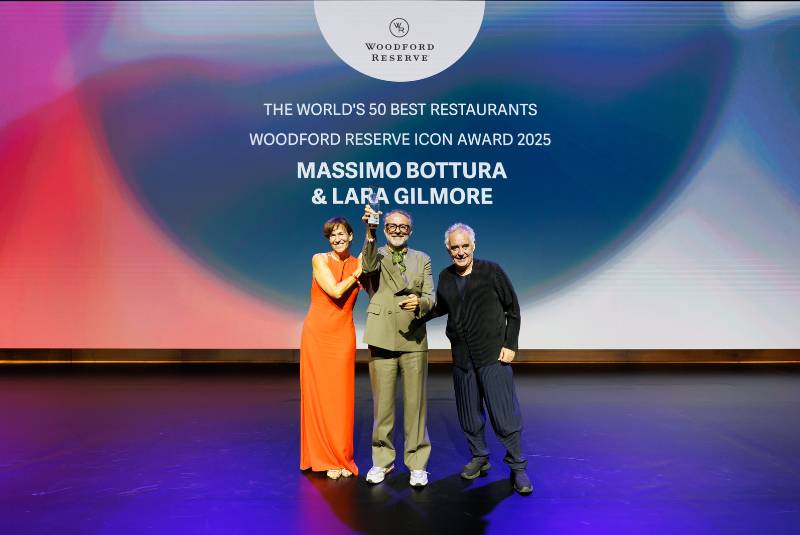
The couple were presented with the Woodford Reserve Icon Award by Ferran Adrià on stage in Turin
What does success and failure mean to you?
“I think failures are great, because the more you learn to fail, the better you are going to be at succeeding. Our failures are what teach us humility and how to take something that’s not working, recognise it’s not working, and rework it. Don’t let your ego or pride get in the way, but let failure be a guiding point to learning more and opening yourself up more to criticism.
“This is not something new. I’ve learned this from people like Ferran Adrià and Alain Ducasse, and great painters, writers and architects. In the kitchen, there’s a kernel of the idea of dish, then it goes through so many different changes until it becomes its perfect self.
“Our success belongs to everyone who works for us. It’s not just the genius chef, it’s the team. It’s the conversations that happen and the little voice at the back of the room who has the most brilliant idea. Listen to it, and everything could change in a minute. It takes a village to make a restaurant shine and grow, and there’s no formula. Success is that you recognise the moment, recognise the team, and then you let go of it and start making mistakes again until the next successful moment. So don’t hold on to success and don’t be afraid of failure.”
What is a dream project that you haven’t pursued yet?
“Casa Maria Luigia was a dream project. I was terrified when we began, I had no idea what I was doing. I still don’t know what I’m doing, but every year I keep pushing the envelope. We add a new space, we renovate more rooms, we create another part of the garden. We added the Acetaia [balsamic vinegar production house] and Al Gatto Verde. Al Gatto Verde was not in the picture. Nobody thought we were going to open another restaurant here in Modena. It was like the unexpected child: the family has four kids and then all of a sudden you get pregnant with the last one and it ends up being your most adored baby!
“I have some ideas of what I’d like to do for my next dream project… maybe an in-house magazine. We do so much storytelling and I’d like to create a community around those stories, recipes and people. There are some other books I’d like to write, including about my experience raising Charlie [their son, who has a rare genetic condition].
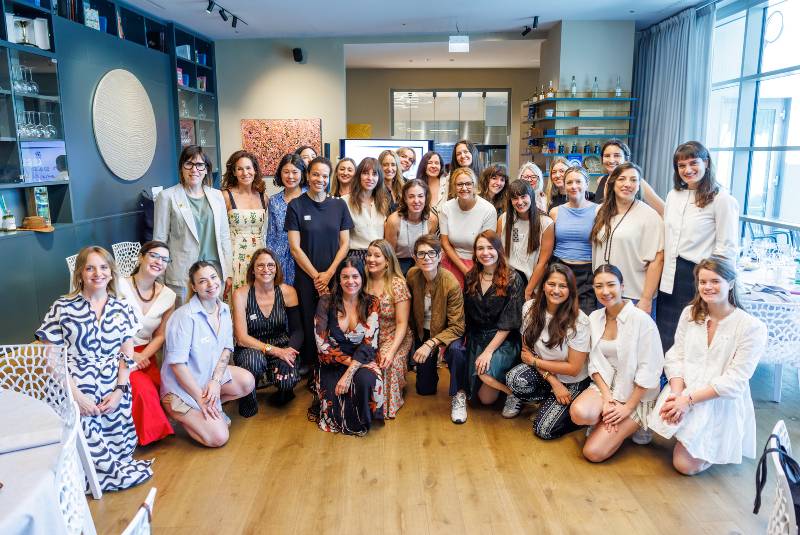
Gilmore pictured at 50 Best Connects, an event which facilitates important conversations between women in the hospitality industry
How does it feel to have won the Woodford Reserve Icon Award as part of The World’s 50 Best Restaurants 2025?
“I felt a little insecure. Why is my name up there too? Isn’t it about an iconic chef? But then the more I thought about it, the more I felt proud. It takes more than one person to make a restaurant what it is, or make a chef realise their dreams. I’ve always felt like my job was to help facilitate Massimo, but in the meantime, I discovered my own dreams and my own talents. So it was very important that I was recognised, too. Not for myself, but for other restaurants out there and other dreamers. And hopefully there will be more partners recognised.
“I’m always for empowering women. We have so many women on our team here: back office, front office, in the dining room, in the kitchens. And I really want to see more women coming forward on the 50 Best list, creating more positive spaces for women and more diversity. So if I represent even a tiny bit of that, that makes me really, really proud.”
Discover the full list of The World’s 50 Best Restaurants 2025, sponsored by S.Pellegrino & Acqua Panna, and special awards winners.
Also, read more about the incredible restaurants in the Best of the Best group. Each has topped the annual poll of The World’s 50 Best Restaurants over its history.